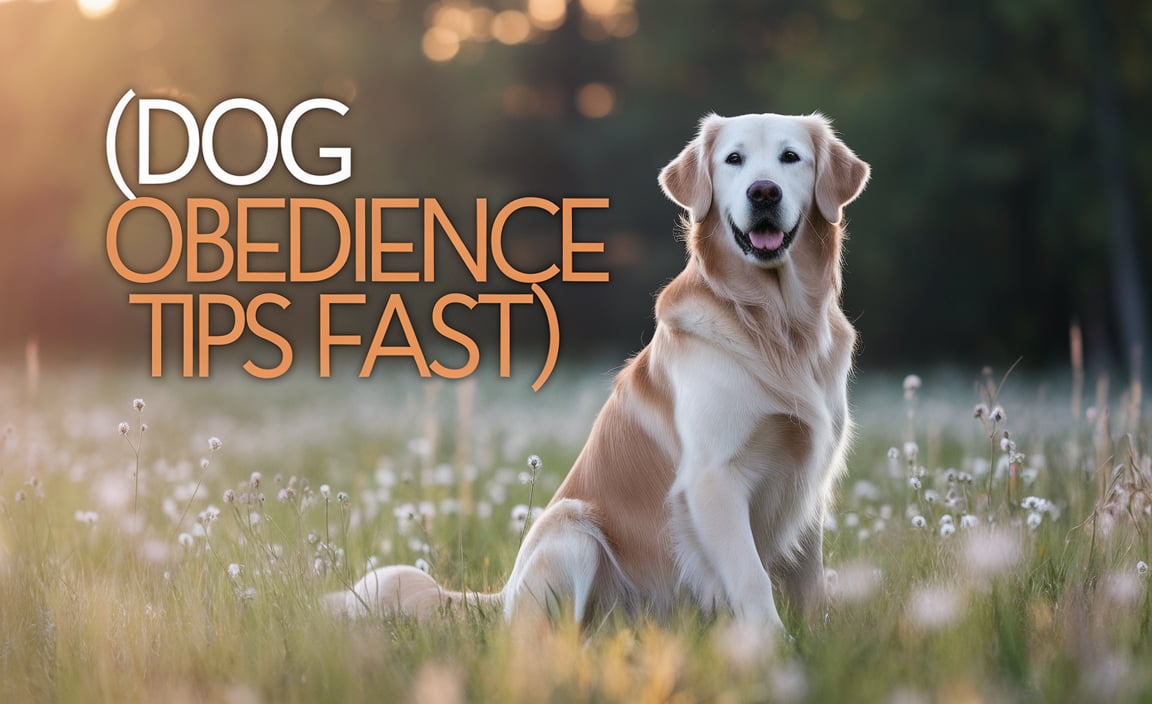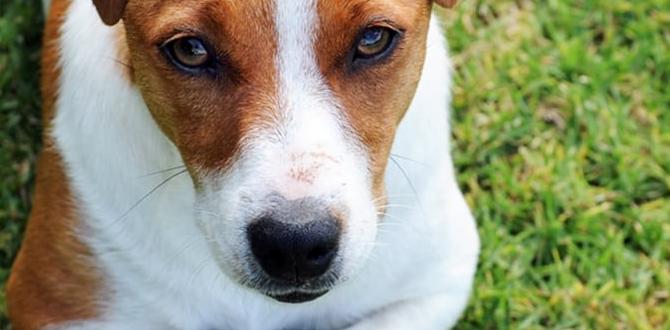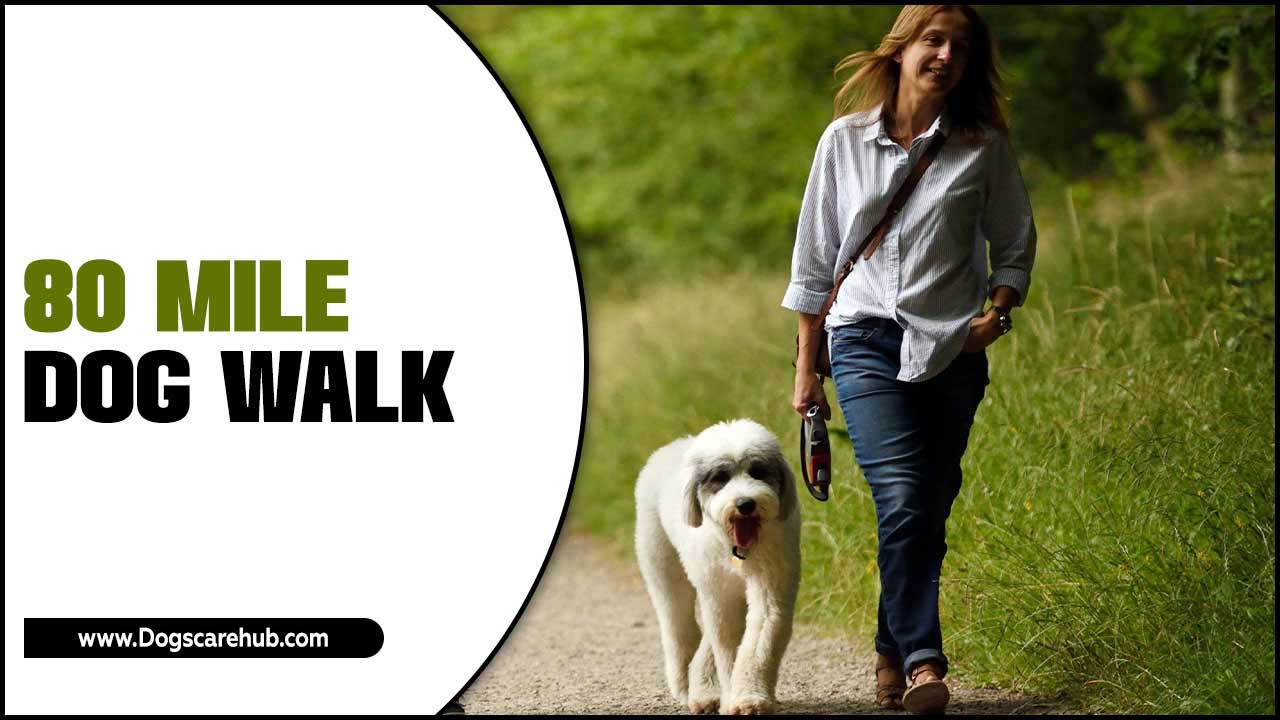Quick Summary: Dog biting prevention naturally focuses on understanding your dog’s needs, positive reinforcement training, and creating a safe environment. By addressing underlying causes like fear, boredom, or pain and teaching calm behavior, you can significantly reduce the risk of biting without harsh methods.
It’s a pet parent’s worst fear: their beloved dog biting someone, or even themselves. It can feel scary, confusing, and even embarrassing. You love your dog, and the thought of them hurting another person or animal is heartbreaking. But what if you could prevent these incidents from happening in the first place, using gentle, natural approaches? You can! We’ll explore simple, effective strategies to help your furry friend feel safe, happy, and less inclined to bite. Get ready to build an even stronger bond with your pup by understanding their world and teaching them how to navigate it calmly. Let’s discover how to make your home a bite-free zone, naturally.
Understanding Why Dogs Bite (It’s Not About Being Bad!)
Before we can prevent something, it’s super helpful to know why it happens. Dog bites aren’t usually a sign that your dog is “bad” or “mean.” Most often, a dog bites because of a specific reason, and understanding these reasons is the first step in prevention. Dogs don’t have words, so biting is sometimes their way of communicating when they feel overwhelmed, scared, annoyed, or in pain. It’s their last resort when other signals have been missed.
Common Triggers for Dog Bites
Let’s break down some of the most common situations and feelings that can lead a dog to bite. Knowing these can help you spot potential problem moments before they escalate.
- Fear and Anxiety: Dogs might bite if they feel trapped, cornered, or threatened. New people, loud noises, or unfamiliar situations can trigger this.
- Pain or Illness: If a dog is hurting, they might snap if touched in a sensitive area, or if they’re feeling generally unwell and irritable.
- Protectiveness: This can be over their food, toys, a favorite person, or even their territory.
- Frustration: Over-excitement, being unable to reach something they want, or being restrained when they want to move can lead to frustration biting.
- Play Biting Gone Too Far: Especially in puppies, play bites can become too hard if not managed correctly from a young age.
- Startling: Waking a sleeping dog suddenly or approaching them from behind can cause a surprise snap.
It’s important to remember that all dogs have the potential to bite under the right circumstances. Our job as responsible owners is to recognize these circumstances and manage them proactively.
Building a Foundation of Trust and Safety
Prevention really starts with creating an environment where your dog feels secure and trusts you completely. This means being a predictable, consistent, and kind leader. When your dog knows you have their back and will keep them safe, they are less likely to feel the need to defend themselves.
Positive Reinforcement is Key
This is the cornerstone of natural dog biting prevention. Instead of punishing unwanted behaviors, we reward the behaviors we do want. This builds positive associations and strengthens your bond.
- Reward Calmness: If your dog is lying down quietly, is relaxed, or is not reacting to something that usually makes them anxious, offer praise and a small treat. This teaches them that being calm is rewarding.
- Reward Good Social Skills: When your dog interacts nicely with other dogs or people, praise them enthusiastically.
- Teach “Leave It”: This is a vital command that teaches your dog to ignore something they are interested in, which can prevent resource guarding issues.
- Teach “Gentle”: For puppies, this means rewarding them when they take treats softly or when their play bites are light. If they bite too hard, yelp and temporarily stop playing.
The goal is to make your dog feel confident and well-understood, rather than anxious or defensive. For more on positive reinforcement, you can check out resources from organizations like the Association of Professional Dog Trainers (APDT).
Establishing Clear Boundaries and Routines
Dogs thrive on predictability. Knowing what to expect makes them feel more secure. This includes:
- Consistent Rules: Everyone in the household should follow the same rules about what the dog can and cannot do.
- Regular Feeding Times: A consistent schedule helps manage hunger and reduces potential resource guarding around meal times.
- Scheduled Play and Rest: Dogs need both. Regular outlets for energy and quiet times for rest help keep them balanced.
- Leash Training: Proper leash manners not only make walks enjoyable but also provide control in potentially triggering situations.
Unpredictability can be a source of stress for dogs, making them more prone to reactive behaviors. A structured environment helps them relax.
Essential Tools and Techniques for Natural Prevention
Beyond daily routines and positive training, there are specific tools and techniques that can be incredibly helpful in preventing bites. These are practical, everyday solutions that you can start using right away.
1. Socialization: The Earlier, The Better
Proper socialization is crucial, especially for puppies. It’s about exposing them to a wide variety of sights, sounds, people, and other dogs in a positive and controlled way. This helps them learn that the world isn’t a scary place.
- Puppy Classes: Look for reputable classes that emphasize positive training and safe interactions.
- Controlled Introductions: Introduce your puppy to new people and well-behaved, vaccinated dogs on leash in calm environments. Let them set the pace.
- Variety of Experiences: Take them to different, safe places – a quiet park, a friend’s house, on a car ride.
For adult dogs, socialization still matters! It might require a slower, more careful approach if they have negative past experiences, but it’s still possible to build their confidence. The American Veterinary Society of Animal Behavior (AVSAB) has excellent position statements on early socialization that highlight its importance.
2. Understanding and Respecting Dog Body Language
This is arguably the most important natural prevention tool. If you can read your dog’s subtle cues, you can often prevent a bite before it happens. Dogs give many warning signals before they resort to biting.
Common Stress Signals to Watch For:
- Lip Licking: Often a sign of mild stress or uncertainty.
- Yawning: When not tired, this indicates stress.
- Whale Eye: When the whites of the eyes are showing, often when the dog is trying to look away from something uncomfortable.
- Tucked Tail: A clear sign of fear or submission.
- Ears Pinned Back: Indicates fear or anxiety.
- Pacing or Trembling: Signs of high stress.
- Stiffness: The dog’s body becomes rigid.
- Growling: This is a warning! It means the dog wants the situation to stop and is uncomfortable. Never punish a growl; instead, remove the dog from the situation.
Learning to recognize these signs allows you to remove your dog from the situation or to reassure them, preventing them from feeling the need to escalate to a bite. Look up resources on dog body language from veterinary behaviorists or trusted animal welfare organizations.
3. Providing Adequate Mental and Physical Stimulation
A bored or under-stimulated dog is an unhappy dog, and an unhappy dog is more likely to develop problem behaviors, including biting. Ensuring your dog has enough to do is a fantastic natural preventive measure.
How to Keep Your Dog Engaged:
- Daily Walks: More than just potty breaks, walks are for exploration and sniffing.
- Puzzle Toys: Food-dispensing toys can keep dogs occupied and mentally challenged for ages.
- Training Sessions: Short, fun training sessions (5-10 minutes) are great for mental exercise.
- Interactive Play: Games like fetch or tug-of-war (with rules!) can be very rewarding.
- Nose Work/Scent Games: Hiding treats around the house or yard for your dog to find is incredibly engaging.
A tired dog is a good dog! Properly channeling their energy in positive ways reduces the likelihood of destructive or aggressive behaviors.
Interactive vs. Passive Stimulation
It’s helpful to differentiate between types of stimulation. Interactive stimulation involves you or your dog actively engaging with something (like playing fetch or training). Passive stimulation is more about environmental enrichment (like having a window to look out of or a comfy bed).
| Type of Stimulation | Examples | Benefits |
|---|---|---|
| Interactive Physical | Fetch, tug-of-war, agility practice, running | Burns energy, builds a strong bond, improves coordination |
| Interactive Mental | Training sessions, puzzle feeders, learning new tricks, mock searches | Prevents boredom, reduces destructive behaviors, builds confidence |
| Passive Environmental | Safe access to windows, access to different textures (rugs, floors), chew toys, comfortable resting spots | Provides comfort, reduces anxiety, offers gentle engagement |
4. Managing Resources and Preventing Guarding
Resource guarding (protecting food, toys, or people) is a common cause of bites. Natural prevention involves proactive management and teaching your dog that these resources are safe and you won’t take them away.
- Never Take Food Away While They Eat: Instead, trade them for something even better.
- “Its Your’s” Game: Walk past your dog while they have a toy or treat, drop a high-value treat near them, and then walk away. This teaches them that people approaching while they have something good is a positive event that brings more goodies.
- Feed Separately: If you have multiple dogs, feed them in separate rooms or crates to avoid competition.
- “Trade Up”: Practice trading a less-valued item for a higher-valued item. This teaches your dog that giving something up results in receiving something better.
This is a gradual process. If your dog already shows signs of guarding, approach it carefully and consider professional guidance.
5. Creating a Predictable and Safe Environment
Sometimes, a dog bites because they are in a situation they don’t like or are uncomfortable with. You can prevent these situations by managing their environment and their exposure to triggers.
- Safe Space: Ensure your dog has a designated safe space – a crate, a dog bed in a quiet corner – where they can go to relax and be undisturbed.
- Manage Visitors: If your dog gets anxious around visitors, keep them on a leash, in their safe space, or even in another room with a stuffed Kong or puzzle toy during busy times.
- Desensitize and Counter-Condition: If your dog is afraid of specific things (e.g., the vacuum cleaner, men with hats), you can slowly introduce these triggers at a low intensity while pairing them with positive experiences (treats, praise).
- Supervise Interactions: Especially with children or new pets, always supervise interactions to ensure they remain positive and safe.
Think of it as being your dog’s advocate. You are protecting them from situations that might overwhelm them, which in turn protects others. For comprehensive advice on creating a safe dog-friendly home, the ASPCA offers excellent resources.
Natural Remedies and Aids (Use with Caution!)
While prevention is primarily behavioral and environmental, some owners explore natural aids to help calm anxious dogs. These should always be used as a supplement to, not a replacement for, proper training and management, and only after consulting with your veterinarian.
- Calming Pheromones: Diffusers or sprays that mimic maternal pheromones can help create a sense of calm in some dogs.
- Herbal Supplements: Certain herbs like chamomile, valerian root, or L-theanine are sometimes used, but dosage and efficacy vary greatly. Always discuss with your vet first, as some herbs can interact with medications or have side effects.
- Bach Flower Essences/Remedies: These are highly diluted floral extracts said to help with emotional balance. Scientific evidence for their efficacy in dogs is anecdotal, but many owners report positive experiences.
Remember, “natural” doesn’t always mean “safe for everyone.” What works for one dog might not work for another, and it’s crucial to ensure these aids are appropriate for your specific dog’s health profile. The Veterinary Information Network (VIN) is a good resource for veterinary-approved information on supplements.
When to Seek Professional Help
While we aim for natural prevention, sometimes professional help is necessary. If your dog exhibits signs of aggression that worry you, or if you’re struggling to implement these techniques, don’t hesitate to reach out.
Signs You Need a Professional:
- Intense or Frequent Growling: Especially if it’s directed at people or other animals and you can’t identify a clear trigger.
- Snapping: Repeatedly snapping with teeth bared.
- Actual Bites: Any bite that breaks the skin requires immediate attention.
- Resource Guarding: If it’s severe or escalating.
- Fear Biting: If your dog is constantly fearful and reactive.
A certified professional dog trainer (CPDT-KA/KSA) or a veterinary behaviorist (DACVB) can provide tailored guidance and develop a behavior modification plan specific to your dog’s needs. They can help diagnose the root cause and teach you effective strategies for managing and changing the behavior.
FAQ: Your Top Dog Biting Prevention Questions Answered
Q1: My puppy nips a lot during play. Is this normal, and how can I stop it naturally?
Yes, puppy nipping is very common as they explore the world and learn bite inhibition. Naturally, teach them to be gentle by yelping loudly and stopping play immediately if they nip too hard. Offer a chew toy instead. If they continue to be mouthy, calmly redirect their attention to an appropriate chew. Many young puppies learn to control their bite through these natural interactions.
Q2: Can I prevent my dog from biting strangers who want to pet them?
Absolutely! The key is to manage your dog’s exposure and advocate for them. Teach your dog to be calm when strangers are around by rewarding quiet behavior. You can also train your dog to greet people by sitting, which is a calmer behavior. When a stranger approaches, you can say, “My dog is in training, please don’t pet them right now unless invited,” or have your dog on a leash and sit a comfortable distance away.
Q3: My dog growls when I try to take their toy. What should I do naturally?
This sounds like resource guarding. The best natural approach is to teach your dog that you are a source of good things, not a threat. Play the “trade up” game: offer a super-tasty treat or a favorite toy in exchange for the toy they are holding. Be consistent and always make the exchange positive. Never forcibly take the toy away, as this can escalate the guarding. If the growling is intense, consult a professional.
Q4: My dog seems anxious around other dogs. How can I prevent them from biting at the dog park?
Dog parks can be overwhelming for anxious dogs. It’s often better to avoid them. Instead, focus on controlled, positive introductions to calm, well-socialized dogs in neutral, less crowded environments. You can also work on desensitization and counter-conditioning from a distance, rewarding your dog for remaining calm when other dogs are visible but far away. Your dog’s comfort and safety are more important than a dog park visit.
Q5: I’ve heard about diffusers for calming dogs. Are these a good natural solution for biting prevention?
Calming pheromone diffusers can be a helpful supportive tool for some dogs experiencing mild anxiety that might contribute to biting, but they are not a standalone solution. They mimic natural pheromones to create a sense of security. However, they won’t fix underlying behavioral issues. Always use them in conjunction with positive training, environmental management, and ideally, after discussing with your veterinarian to ensure it’s appropriate for your dog.
Q6: My dog is older and suddenly seems more reactive. Could this be a biting prevention issue?
It’s crucial to rule out medical causes for sudden behavioral changes in senior dogs. Pain, vision loss, or cognitive decline can make dogs more irritable and prone to biting. Schedule a check-up with your veterinarian immediately. If health issues are managed, then you can address behavioral aspects with gentle training and environmental adjustments.
Conclusion: A Happier, Safer Life Together
Preventing dog bites naturally is an ongoing journey, not a quick fix. It’s about building a deep understanding and partnership with your canine companion. By focusing on positive reinforcement, understanding their body language, providing ample mental and physical outlets, and managing their environment, you create a foundation of trust and security.
Remember, every dog is an individual. What works wonders for one might need tweaking for another. Be patient, be consistent, and celebrate the small victories. You are your dog’s advocate, their interpreter, and their most trusted friend. By investing time in these natural prevention methods, you’re not just avoiding potential problems; you’re enriching your dog’s life and strengthening the incredible bond you share. Here’s to many happy, bite-free years together!
Meet Elyse Colburn, the devoted canine companion and storyteller behind the enchanting world of “Tales, Tails, and Adventures Unleashed.” A passionate dog enthusiast with a heart full of paw prints, Elyse Colburn shares heartwarming tales and insightful adventures, celebrating the joy, loyalty, and endless antics that make every dog a true hero. Join Elyse Colburn on this tail-wagging journey, where every post is a love letter to our four-legged friends.






